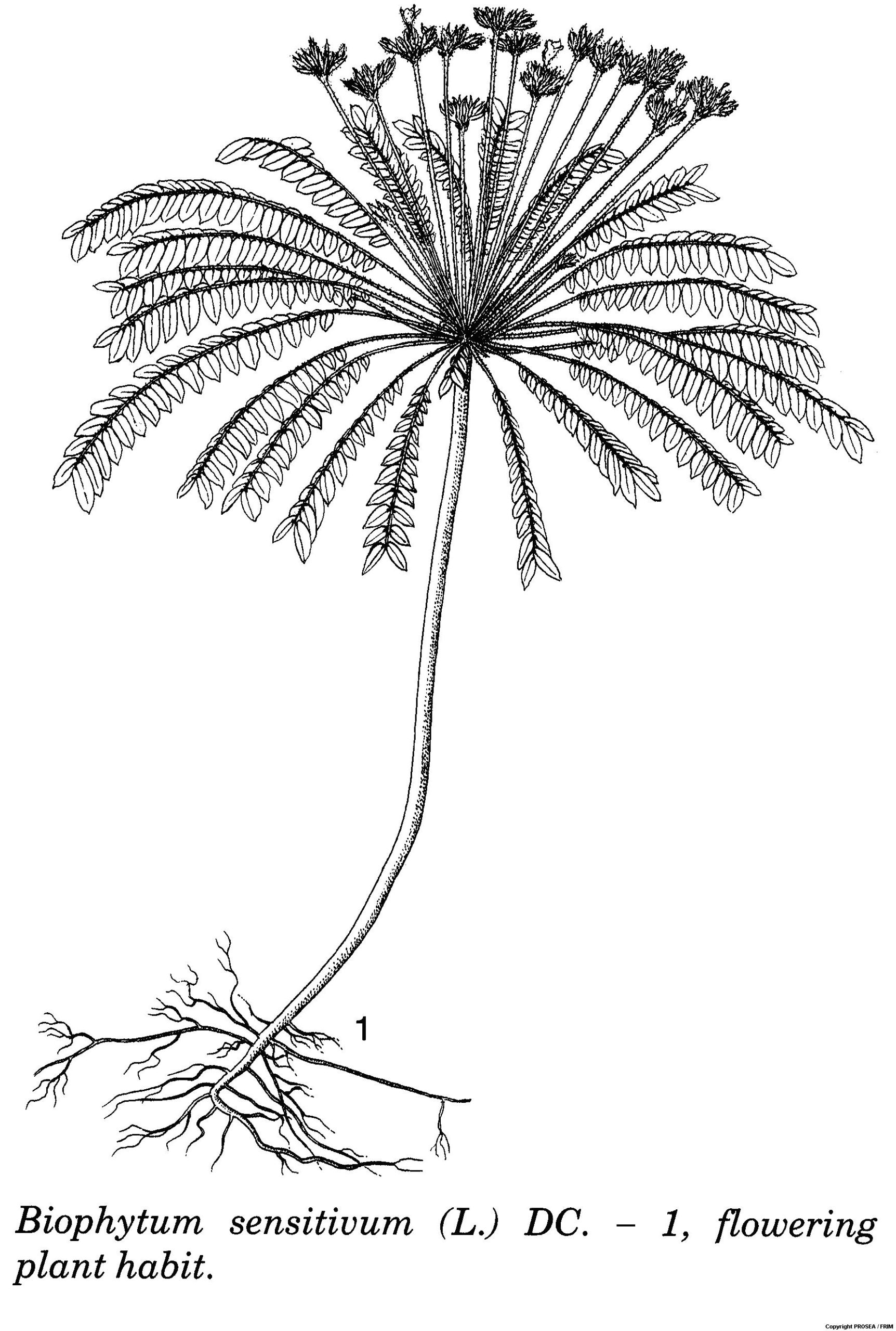Biophytum sensitivum (L.) DC.
Family
Oxalidaceae
Synonyms
Oxalis sensitiva L.
Vernacular Names
|
Indonesia |
Daun kucingan (Sumatra), krambilan (Javanese), kurang-kurang (Moluccas). |
|
Philippines |
Damong-bingkalat (Tagalog), damon-huya (Bisaya), mahihiin (Iloko). |
|
Laos |
Dok han. |
|
Thailand |
Chi yop tontaan (northern), krathuep yop, khan rom. |
|
Vietnam |
L[as] chue me, chua me l[as] me, ta lang. |
Geographical Distributions
Biophytum sensitivum is widely distributed in the Indo-Malesian tropics, common throughout Malesia, but not yet recorded in New Guinea.
Description
Biophytum sensitivum is an annual herb, which can grow up to 35 cm tall. Its stem is simple and smooth.
The leaves are 7-12(-14)-jugate, with 5-10(-16.5) cm long rachis, sensitive to touch and ply downwards. The terminal leaflets are sickle-shaped-obovate, measure 8-18 mm x 3-10 mm, asymmetrical and with excentric midrib while the other leaflets are elliptical, symmetrical, truncate at base and hairless.
The peduncle is up to 14 cm long, up to 10-flowered and hairy glandular. The pedicel is 1.5-3.5 mm long, with 4-7 mm long ovate-lance-shaped sepal, acute, strigose and hairy glandular. The petals are lance-shaped, measure 5-7 mm x 1-2 mm, truncate, yellow but sometimes with purplish lines, tristylous, with 0.5-1 mm long styles in the middle, often clasping the anthers of the longer filaments and tearing them off. Its capsule measures 3-4 mm x 2 mm, apically hairy and minutely glandular-hairy on the ribs.
There are 0-3 seeds per cell, with a size of 1 mm x 0.8 mm, transversely tubercled and ridged.
Ecology / Cultivation
Biophytum sensitivum occurs in shady localities, in waste lands, along riverbanks and under humid thickets up to 250 m altitude.
Line Drawing / Photograph
References
- Plant Resources of South-East Asia No.12(2): Medicinal and poisonous plants 2.



